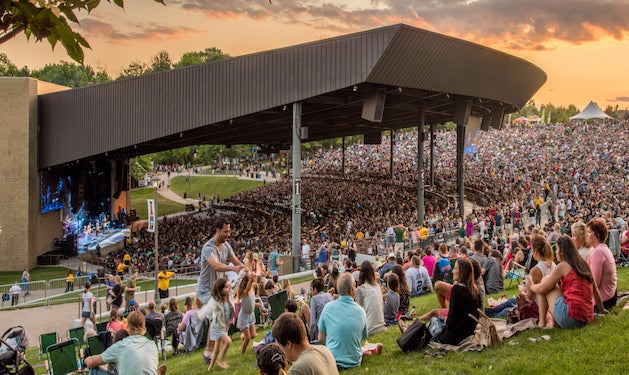The Spiritual Connections of the Woodstock Monument
Fall Oral History Intern Jarrett Hill discusses the historical and spiritual significance of the Woodstock Monument

Since I began transcribing interviews from the Museum at Bethel Woods’ pop-up oral history program this summer, I have engaged with an abundance of individual stories and perceptions about the 1969 Woodstock Music and Art Fair. Through many of these interviews, I've noticed a mutual spiritual connection to the physical site (experienced deeply on the field and at the Woodstock monument). People often remark on the energy of the site; the impact of being there translates into a transcendent, special sensation. During the pop-up program in August, this was particularly evident.
The atmosphere of any given landmark or historic site has the potential to collect and exude energy driven by its history. The Woodstock Music and Art Fair occurred at the tail end of the Sixties, a decade that carries an intense mythological weight. Woodstock’s status as the representation of peace and utopian social possibilities and as an icon of the era’s music creates an exceptionally vibrant legacy. The festival's ethos, its place in time, and the serenity of its bucolic location in Bethel, New York, all produce a particularly potent mystical resonance.
When asked what it means for her to be at the historical site, Jill Conklin, a local who has attended all of Woodstock’s anniversary concerts, says, “It just has a feeling of calm, peaceful, like, it’s all, I don’t think it’s ever really lost that. Like it’s embedded in the earth or something.” The serenity of the site and the nature surrounding it is what many visitors are drawn to today.
Even those who did not attend the original festival in 1969 are attuned to the metaphysical properties of the space. Giselle Novak visited the Woodstock monument this summer for the first time and shared her feelings: “Coming here today, I told my partner this morning, was like coming to sacred ground.” Giselle was only seven years old when Woodstock took place, and although she wasn’t old enough to attend, she felt like a “hippie at heart” from a very young age.
During her interview, Giselle recalls walking hand in hand with her mother in Miami during the GOP convention in 1968. She saw the protesting hippies outside and felt a connection to them, “I knew there was something there as a child, that there was a vibration that I was drawn to.”
She expands on the vibrational pull of the counterculture and the site at Bethel Woods: “Vibrations are held in the earth, and the trees, and the air of a place. . . On some cellular, or even maybe like a metaphysical level that can’t be measured in the physical realm, that spirit and the people who were here are still here in a way.”
The impact Woodstock has on Giselle extends beyond the material world and enters a spiritual realm of connection. Just physically being on the site and the Woodstock monument gives her a sense of energetic participation with those who were there in 1969.
Like Giselle, Jessica Weiss was too young to attend Woodstock but describes herself as a “latent hippie as a child.” Jessica talks about how she knew from the first time she visited Bethel that she wanted to retire there because of its magical feeling: “There is a sacredness and a sanctity here that I think…all of the musicians that [play here] understand that they are on the sacred, [hallowed] ground.”
Jessica comes to Bethel and the Woodstock monument because “there is this sanctity of space… the fact that I have a piece of sacred ground that ties me to history.” Jessica is so moved by this energy that she brings the vibrations from the site to her own home, “. . . I picked all of the dandelion puffs from here and I brought them back to my house so that I could replant [them]. I’m a big believer in energy and connection.”
The ethereal essence of the Woodstock site is eternal. Whether or not someone attended the original festival, there is an interconnectedness and an energetic pull when one visits the site today. The legendary festival has such an impact that people see the site as a religious space; it is a tranquil place where people continue to visit to feel the vibrations of harmony and peace that have never left. Anne Noel Quinn, a Woodstock alum states: “I always have that little badge of, ‘I was here,’ when I come back with friends and family…it’s almost like a sacred place.”
